Heel pain may seem like a minor annoyance, a bit of soreness after a run, or stiffness when getting out of bed. But heel pain is one of the most common foot problems that affects people of all ages. When it lingers, worsens, or starts to interfere with your daily routine, it can be a sign of an underlying condition that requires targeted treatment.
At HelloPhysio, we know how frustrating heel pain can be for active people. Whether you’re a runner, athlete or just someone who’s always on your feet, you deserve effective, personalized care.
Let’s break down what causes heel pain, including the common causes of heel pain such as plantar fasciitis, heel spurs and nerve issues like tarsal tunnel syndrome, how we diagnose it, and most importantly how we treat it, using a combination of advanced physiotherapy, adjunctive technology and evidence-based exercises that restore function and prevent recurrence of your heel pain.
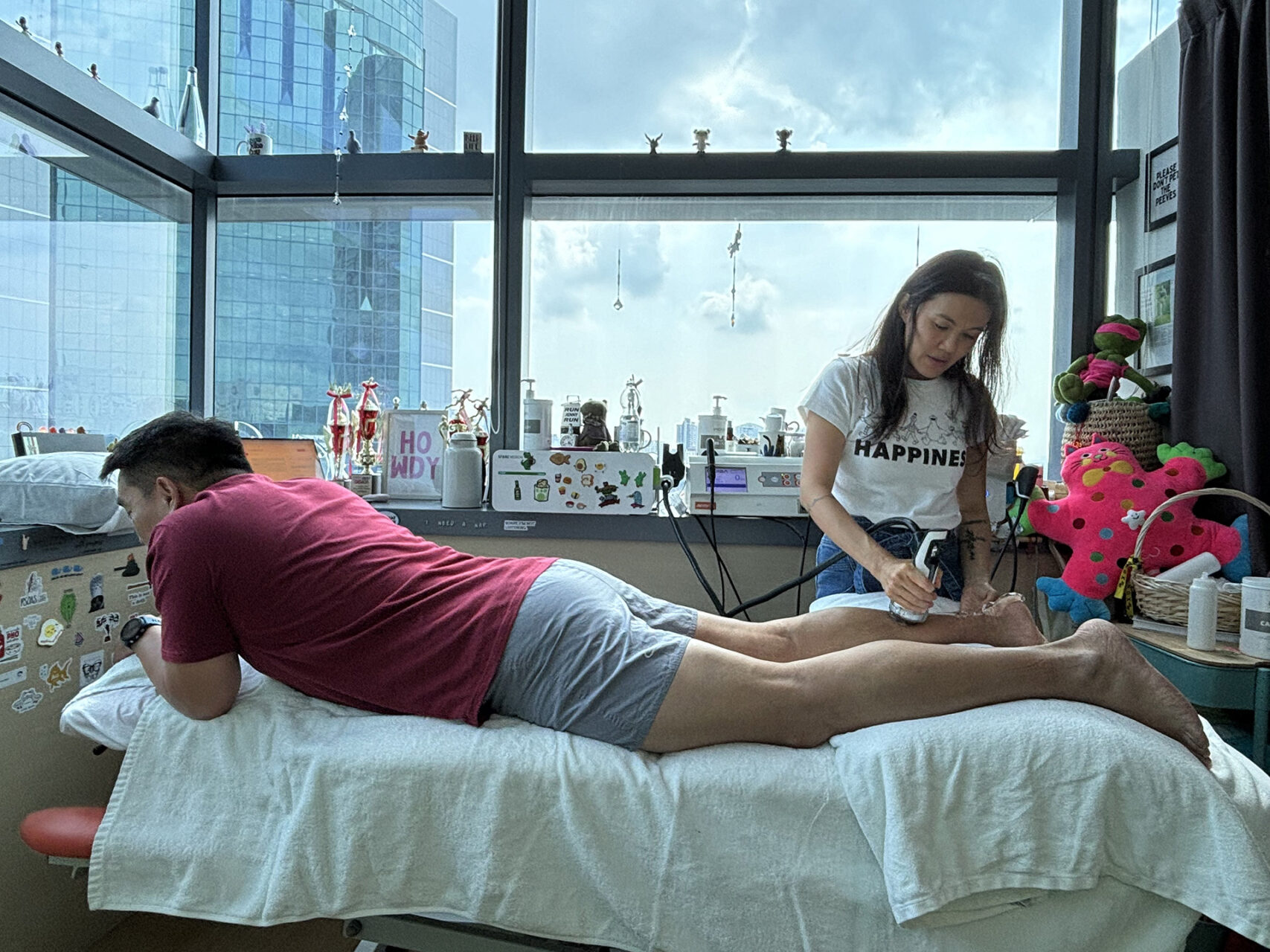
Introduction: Understanding Heel Pain
Heel pain is one of the most common foot complaints worldwide, affecting mobility and daily life. Whether it develops gradually or suddenly, heel pain can disrupt routines, limit physical activity and even make standing uncomfortable. The heel bone, or the calcaneus, is the largest bone in the foot and bears the brunt of impact with every step, making it especially prone to stress, overuse and injury.
The heel is home to a network of bones, tendons, ligaments and fat pads that work together to support the foot. When any one of these structures becomes inflamed or irritated, pain can occur. The causes of heel pain are many and complex. While plantar fasciitis is the most common, other culprits include Achilles tendinitis, heel spurs, Sever’s disease in adolescents, nerve compression and heel pad syndrome.
Plantar fasciitis occurs when the plantar fascia, a thick band of connective tissue that runs from the heel bone to the toes, becomes overloaded, typically at its attachment point on the heel. This leads to microtears, inflammation and the classic sharp pain felt during the first steps in the morning or after rest.
Back of heel pain, on the other hand, is often associated with Achilles tendon irritation or inflammation at the insertion point. In some cases, bony growths like heel spurs may form due to chronic strain. While not always painful themselves, these spurs often come with other inflammatory conditions. Understanding what’s causing the discomfort is the first step to targeted heel pain treatment. Addressing both the symptoms and the underlying causes is crucial to achieving lasting relief and improved mobility.
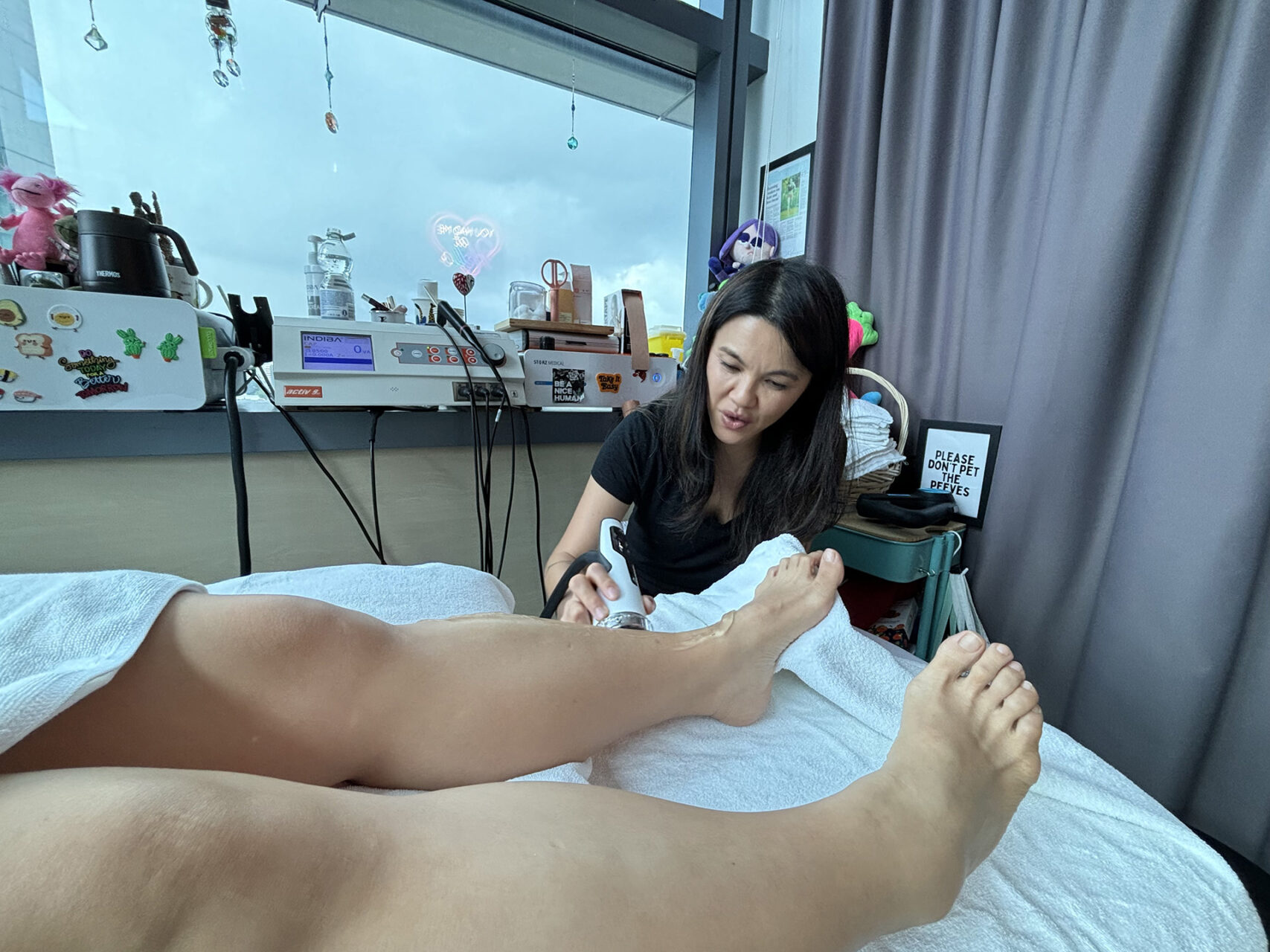
Symptoms of Heel Pain
Heel pain can present in many ways, and common heel pain symptoms include sharp, stabbing or throbbing pain in the heel area, which may be felt in the morning when you first get out of bed, or after long periods of rest.
Some people experience tenderness, swelling or a burning sensation on the bottom or back of the heel. Pain in the heel often intensifies with activities such as walking, running or standing for long periods, and may ease with rest. In some cases, the heel area may be red, warm to the touch, or show signs of inflammation.
If you experience persistent pain in the heel or if the discomfort is interfering with your daily activities, consult a professional. Imaging tests, such as X-rays or ultrasound, may be recommended to help identify the underlying cause of heel pain and guide the most effective treatment plan.
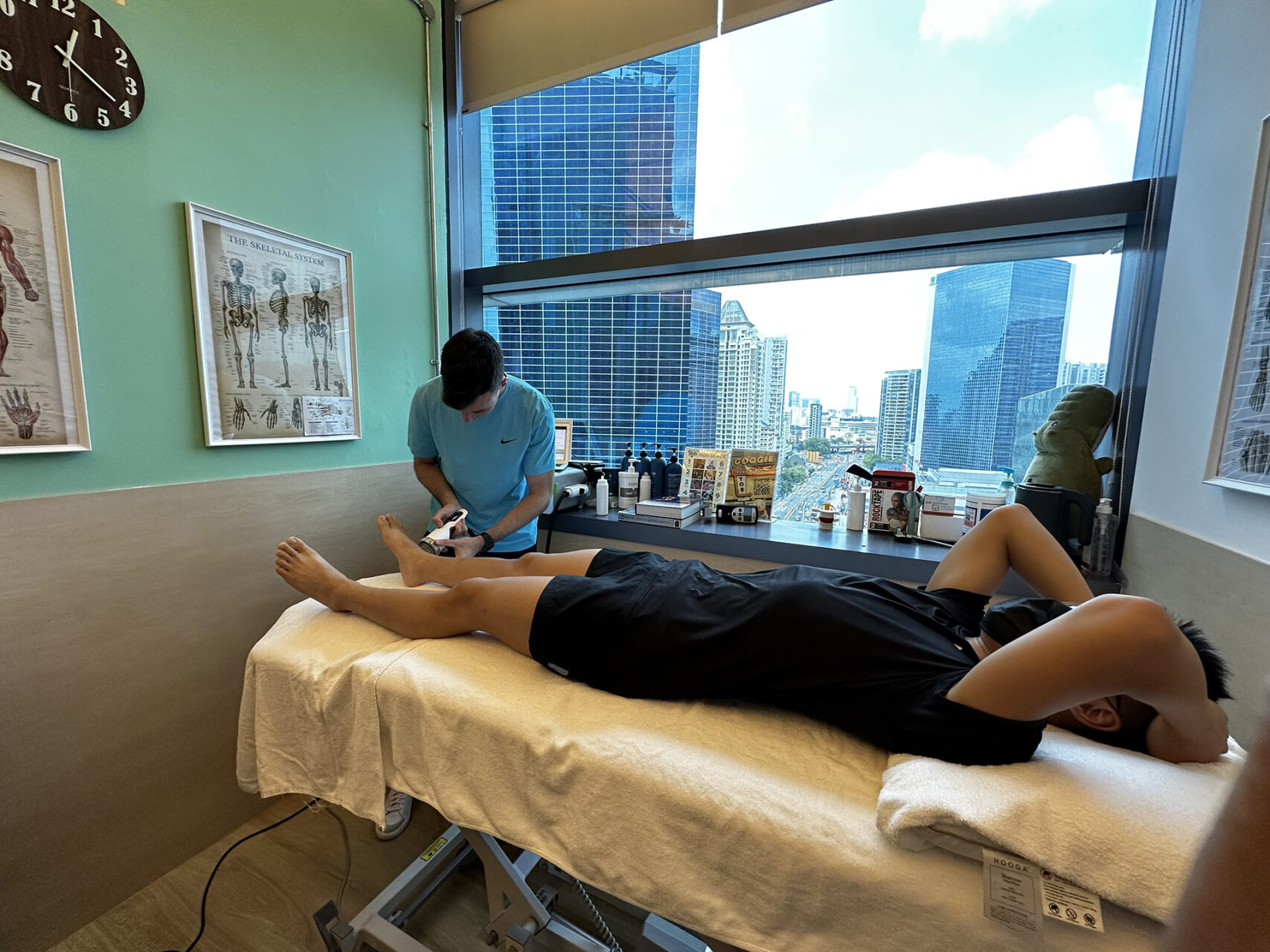
Heel Pain Causes and Treatment Categories
Heel pain can be categorized into two types: plantar (bottom of the heel) and posterior (back of the heel). Knowing which one you have is the first step to treatment.
- Plantar Fasciitis: This condition occurs due to inflammation of the plantar fascia, typically caused by poor foot biomechanics, overuse or inadequate footwear. The result is a familiar, sharp, stabbing pain in the heel, which is especially noticeable first thing in the morning or after prolonged periods of rest.
- Heel Spurs: A heel spur is a bony growth that can form along the surface of the heel bone at the attachment of the plantar fascia. While not always painful on their own, spurs can contribute to or exacerbate plantar fasciitis.
- Achilles Tendinitis and Back of Heel Pain: If your pain is at the back of the heel, Achilles tendinitis may be the cause. This is common in runners or anyone increasing training intensity without adequate rest or mobility work. Treatment for back of heel pain typically focuses on reducing inflammation and offloading the tendon to facilitate healing.
- Other Conditions: Sever’s disease in adolescents, fat pad atrophy in older adults and heel bursitis (inflammation of the bursae) can all mimic similar symptoms. It’s also important to rule out a stress fracture with imaging studies such as X-rays or bone scans when diagnosing heel pain. Proper diagnosis ensures that heel pain treatment is specific, targeted and effective.
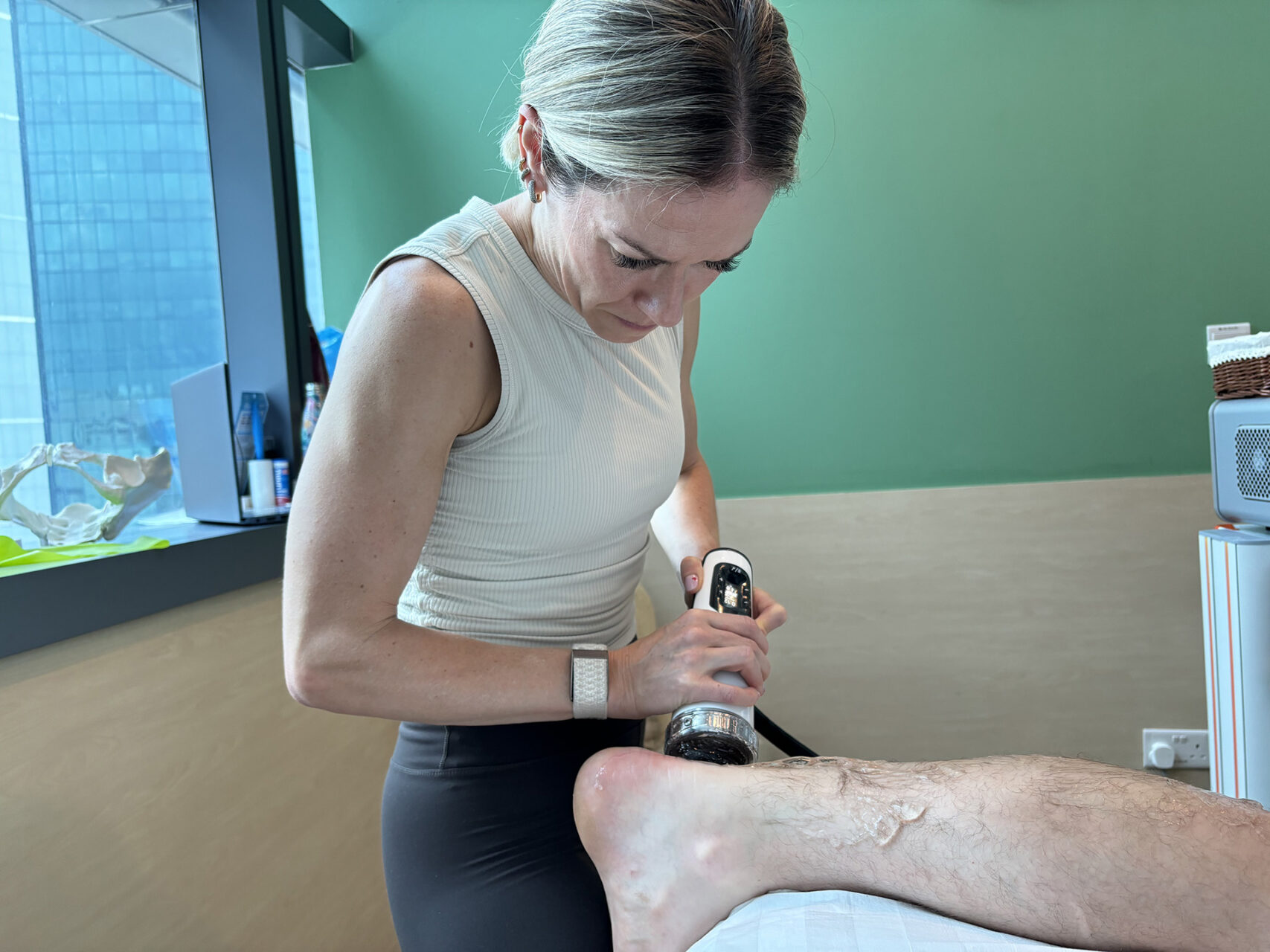
Plantar Fasciitis: The Most Common Cause
When it comes to heel pain, plantar fasciitis is the most common cause, accounting for most of the cases seen in clinics. Plantar fasciitis occurs when the plantar fascia – a thick band of connective tissue running along the bottom of the foot from the heel bone to the toes – becomes inflamed or irritated. This tissue supports the arch of the foot and absorbs the impact of daily activities.
Plantar fasciitis is often characterized by pain in the heel, which is most noticeable in the morning or after periods of rest. When the plantar fascia is overstressed, microtears can develop, resulting in pain and stiffness, particularly in the heel area.
Contributing factors can be overuse, poor footwear, high-impact activities or biomechanical issues such as flat feet or high arches. Treatment options for plantar fasciitis range from rest and ice to physical therapy, custom orthotics and advanced modalities like shockwave therapy. Early intervention and a tailored approach are key to reducing pain, promoting healing and preventing recurrence of this common cause of heel pain.
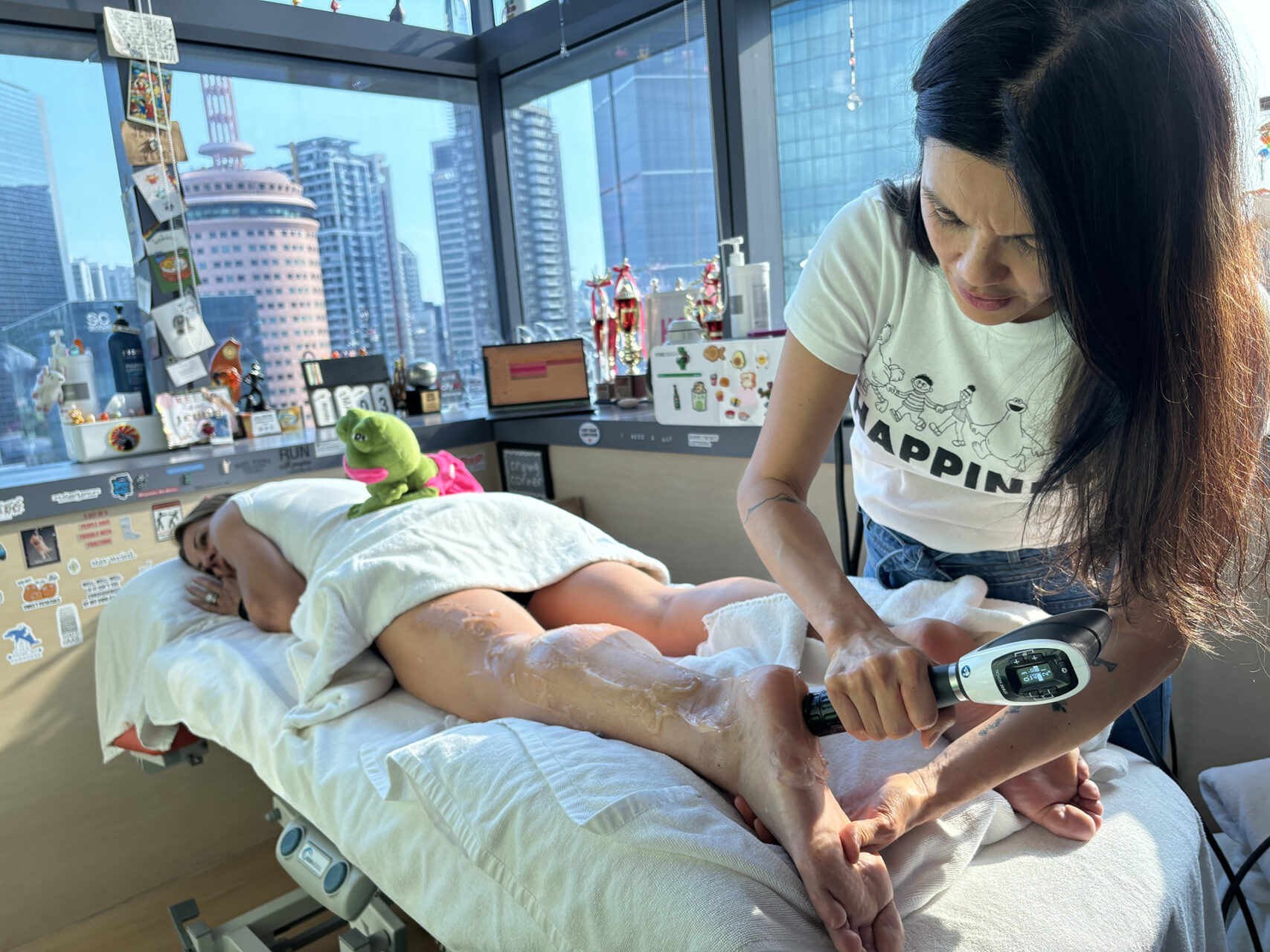
How Heel Pain is Diagnosed
At HelloPhysio, our assessment begins with a thorough examination of your medical history, activity levels, footwear choices and movement habits. From there, we perform a comprehensive physical examination, evaluating your gait, strength, flexibility and foot mechanics.
If needed, imaging techniques such as X-rays or an MRI may be recommended to confirm a diagnosis or to rule out other concerns. For example, an X-ray can help identify a bone spur or rule out a stress fracture as a cause of heel pain. Proper diagnosis is key, not only to get the right treatment plan but to avoid prolonged discomfort or worsening symptoms.
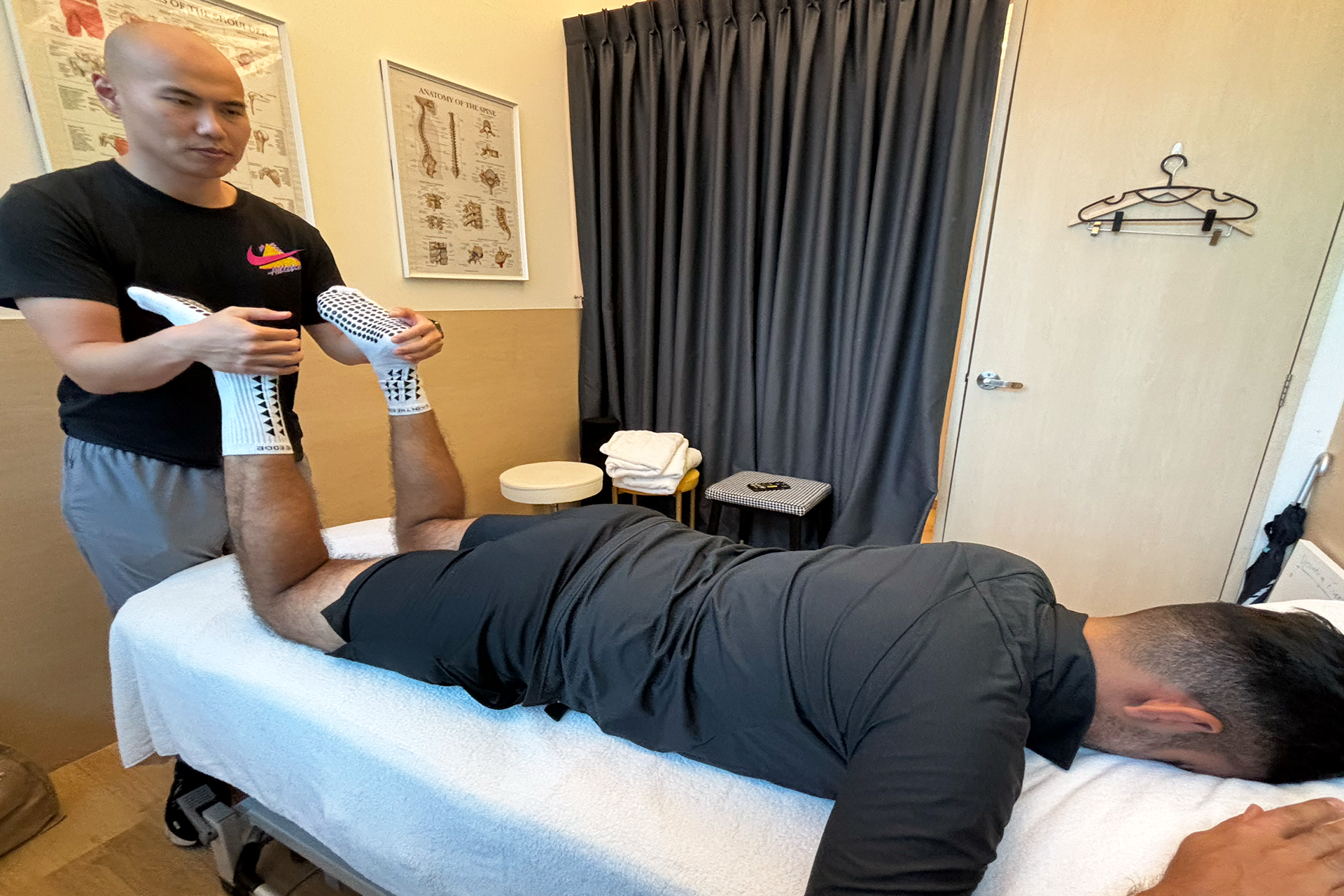
Heel Pain Treatment Options
Heel pain treatment is not one-size-fits-all. It depends on the cause, severity and how long symptoms have been present. At HelloPhysio, we create personalized rehabilitation programs that address short-term relief and long-term recovery. These tailored treatments can help relieve pain and restore mobility.
Physical Therapy and Rehabilitation
Physical therapy is at the core of most heel pain treatment plans at HelloPhysio. Through manual therapy, therapeutic ultrasound and targeted mobility and strengthening work, we reduce pain, correct movement dysfunction, and help you regain full function.
Heel pain treatment exercises are tailored to each patient and may include plantar fascia stretches, eccentric calf strengthening exercises, foot intrinsic muscle activation and balance retraining. Stretching and strengthening the calf muscles can help improve flexibility, reduce tension on the Achilles tendon and alleviate heel pain. These movements are designed not only to relieve pain but to build resilience and prevent future flare-ups.
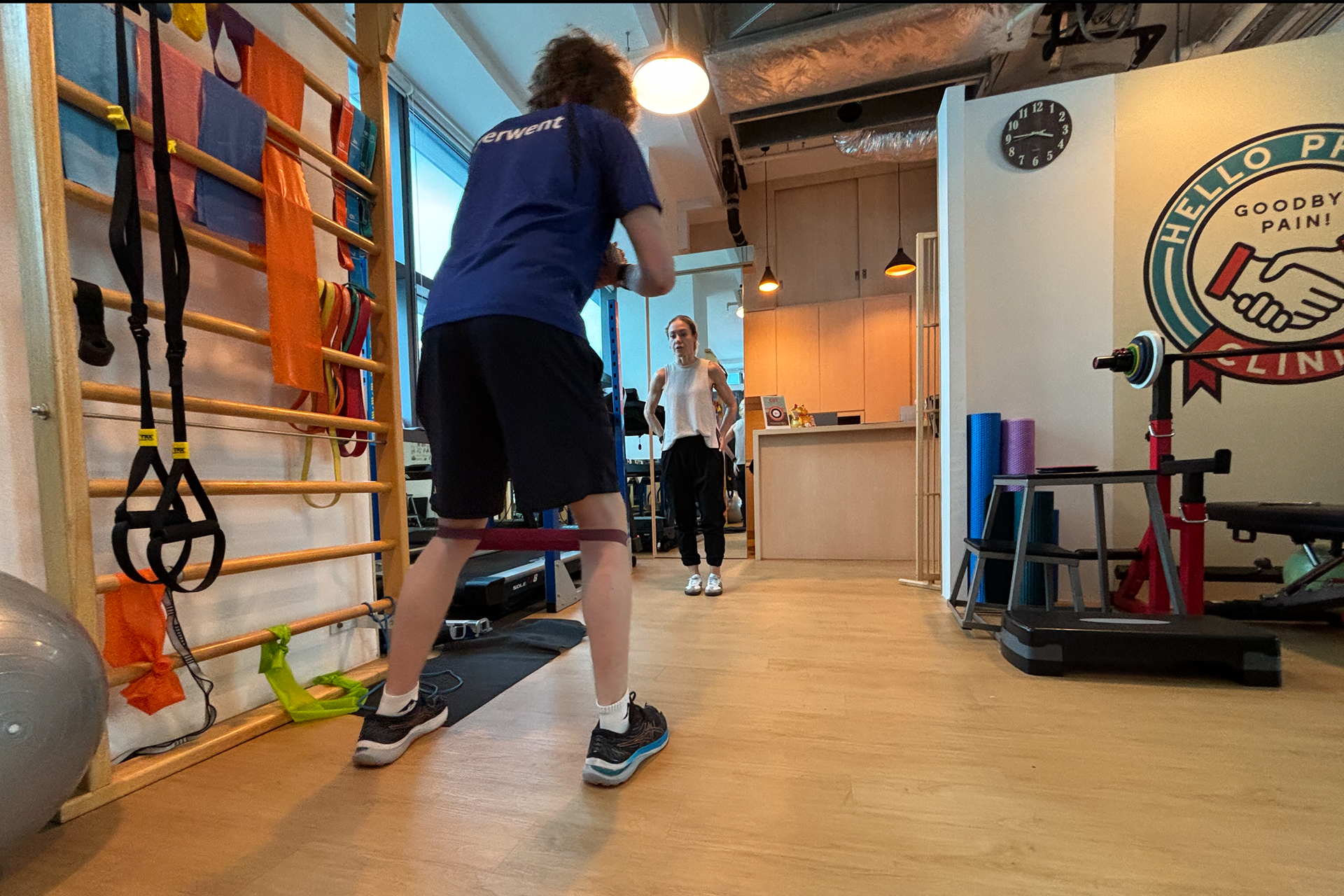
Shockwave Therapy
One of the most effective tools we use for stubborn heel pain, especially in chronic cases of plantar fasciitis or Achilles tendinopathy, is radial and focused Shockwave Therapy. Shockwave Therapy is a non-invasive treatment that uses pulses generated by a machine to stimulate healing, increase blood flow, and reduce pain in cases of plantar fasciitis. It’s especially helpful for those who have tried rest, orthotics and exercises without success.
Shockwave Therapy complements manual therapy and rehab, often accelerating progress and reducing recovery time. Most patients experience noticeable improvement within a few sessions.
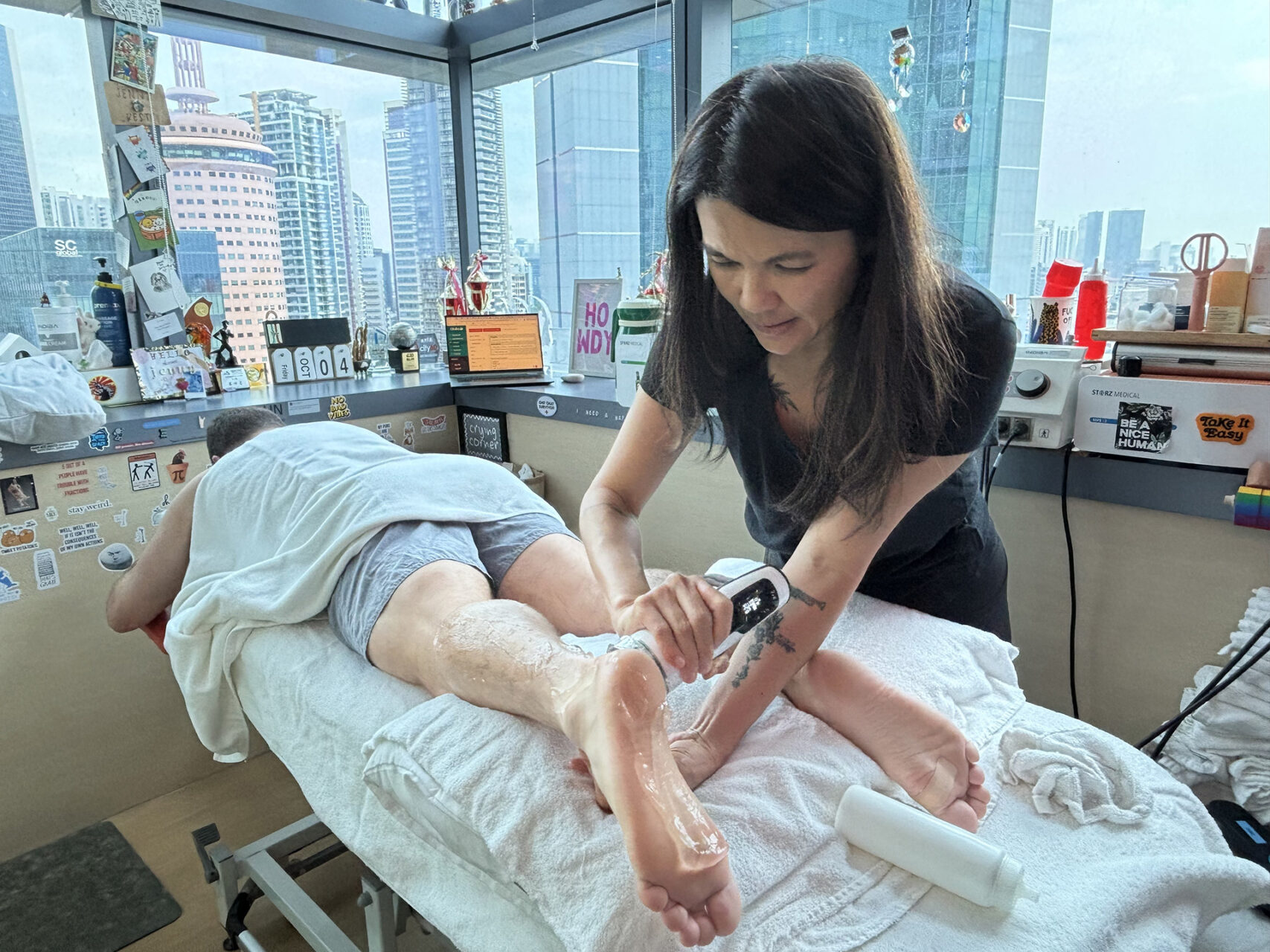
INDIBA® Activ Therapy
Another advanced treatment modality we use is INDIBA Activ, a form of radiofrequency therapy that promotes deep tissue regeneration and pain relief. INDIBA works by stimulating cellular metabolism and increasing blood flow, thereby accelerating the body’s natural healing process.
This therapy is particularly beneficial for soft tissue injuries and chronic inflammation. When combined with physiotherapy, it helps reduce pain, relax tight muscles and support long-term recovery.
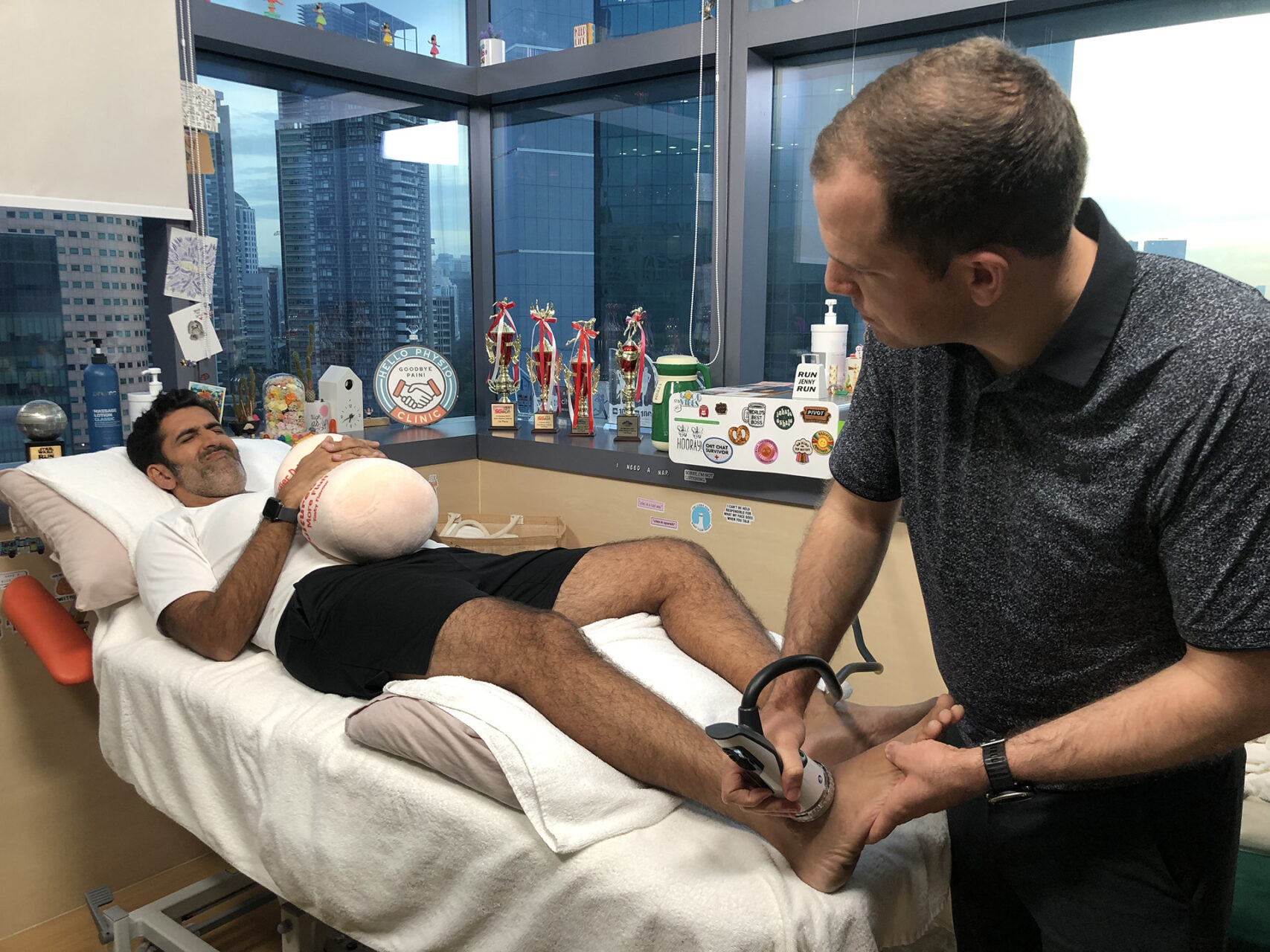
Other Non-Surgical Treatments
Surgery is rarely the first choice for heel pain.
In most cases, a well-structured non-surgical program yields excellent results. Alongside therapies like Shockwave and INDIBA, we often recommend:
- Custom orthotics to correct biomechanical issues
- Taping to support the arch or offload the Achilles tendon
- Footwear advice for your foot type and activity level
- Education on load management and activity modification
Injections or medication may provide temporary relief, but should be used strategically, not as a standalone solution. Physiotherapy is the gold standard for treating and preventing long-term heel pain.
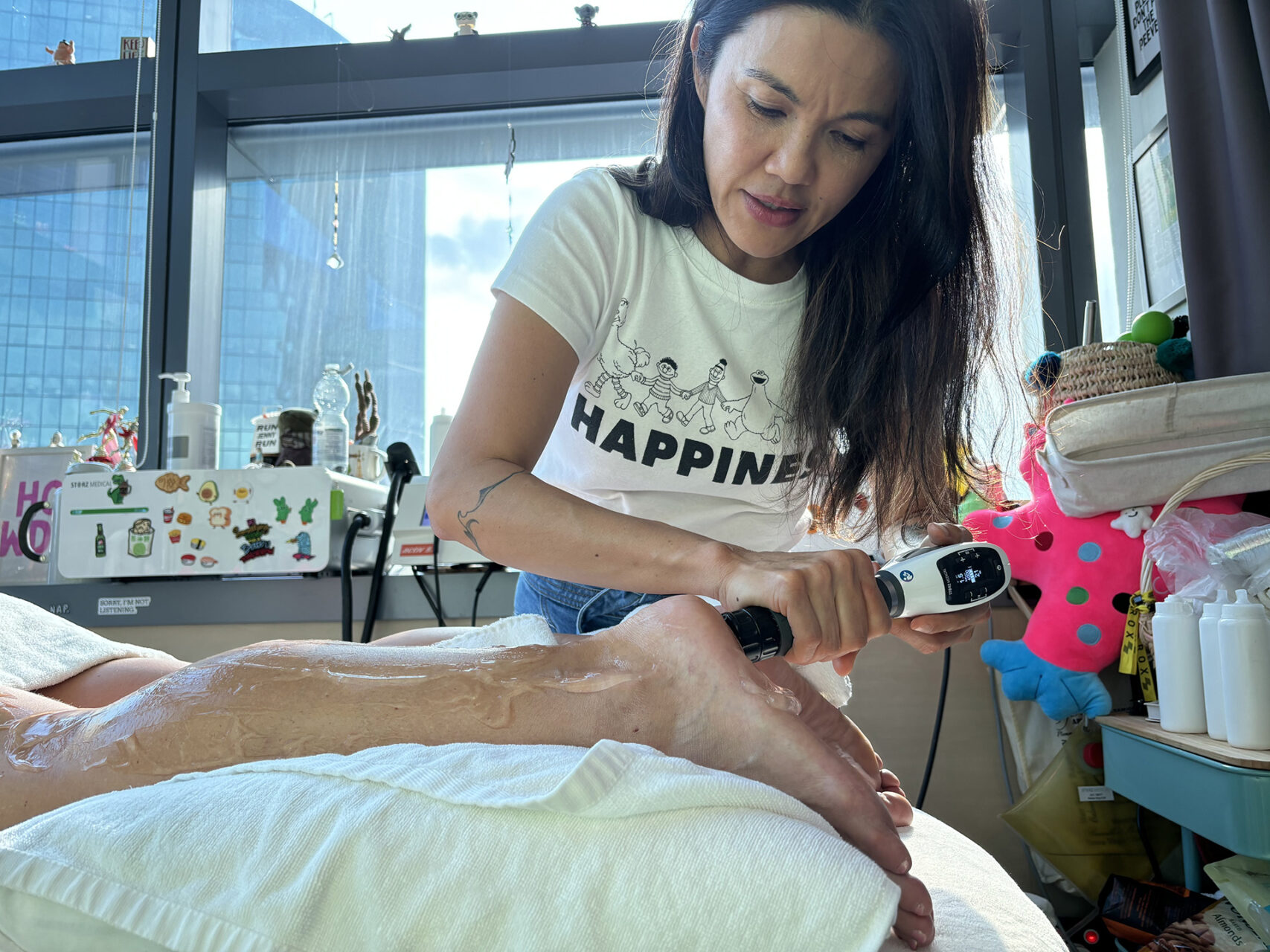
Preventing Heel Pain
The best way to manage heel pain is to stop it before it starts. Prevention is a combination of good training habits, proper footwear choices, and maintaining strength and mobility through regular movement.
Daily heel pain treatment exercises, such as calf stretches and foot mobility work, can go a long way in reducing stress on the plantar fascia and Achilles tendon. If you’re a runner or participate in high-impact sports, gradually increasing intensity and building in recovery days is essential.
Wearing well-cushioned, supportive shoes, especially on hard surfaces, also helps reduce repetitive stress on the heel. If you have flat feet or high arches, custom orthotics may help distribute pressure more evenly.
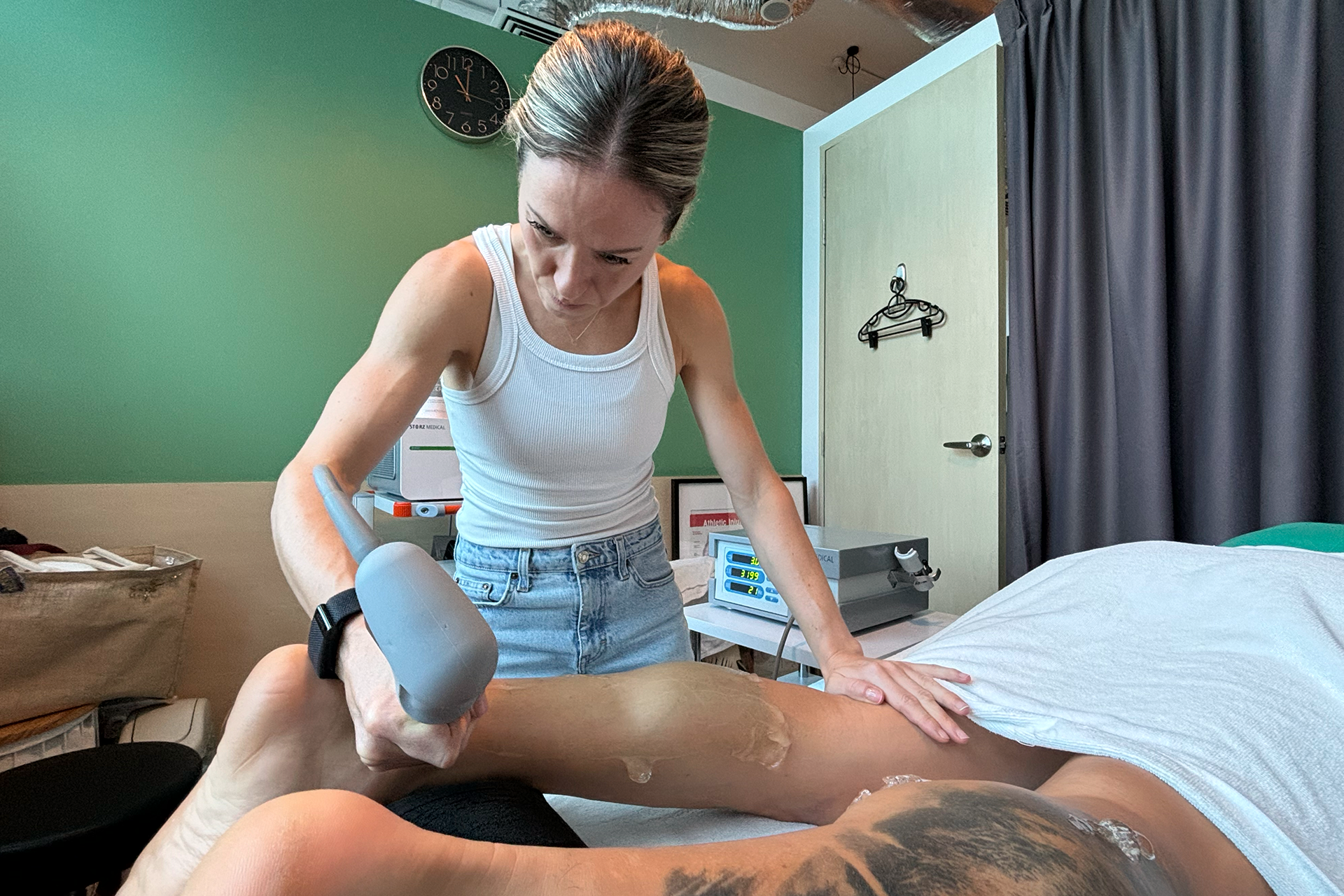
The Connection Between Heel Pain and Foot Function
Underlying foot mechanics often drive recurring heel pain. Issues such as flat feet, high arches, or limited ankle mobility can create uneven forces across the heel, leading to increased tissue stress.
At HelloPhysio, we take a comprehensive, whole-body approach to treating heel pain. That means not only treating the painful area but identifying and addressing dysfunctional movement patterns or weaknesses that may be contributing to the problem.
We also assess how the hips, knees and core interact with your foot and ankle. After all, pain at the heel is rarely an isolated issue. It’s usually part of a bigger picture that includes how you move, train and recover.
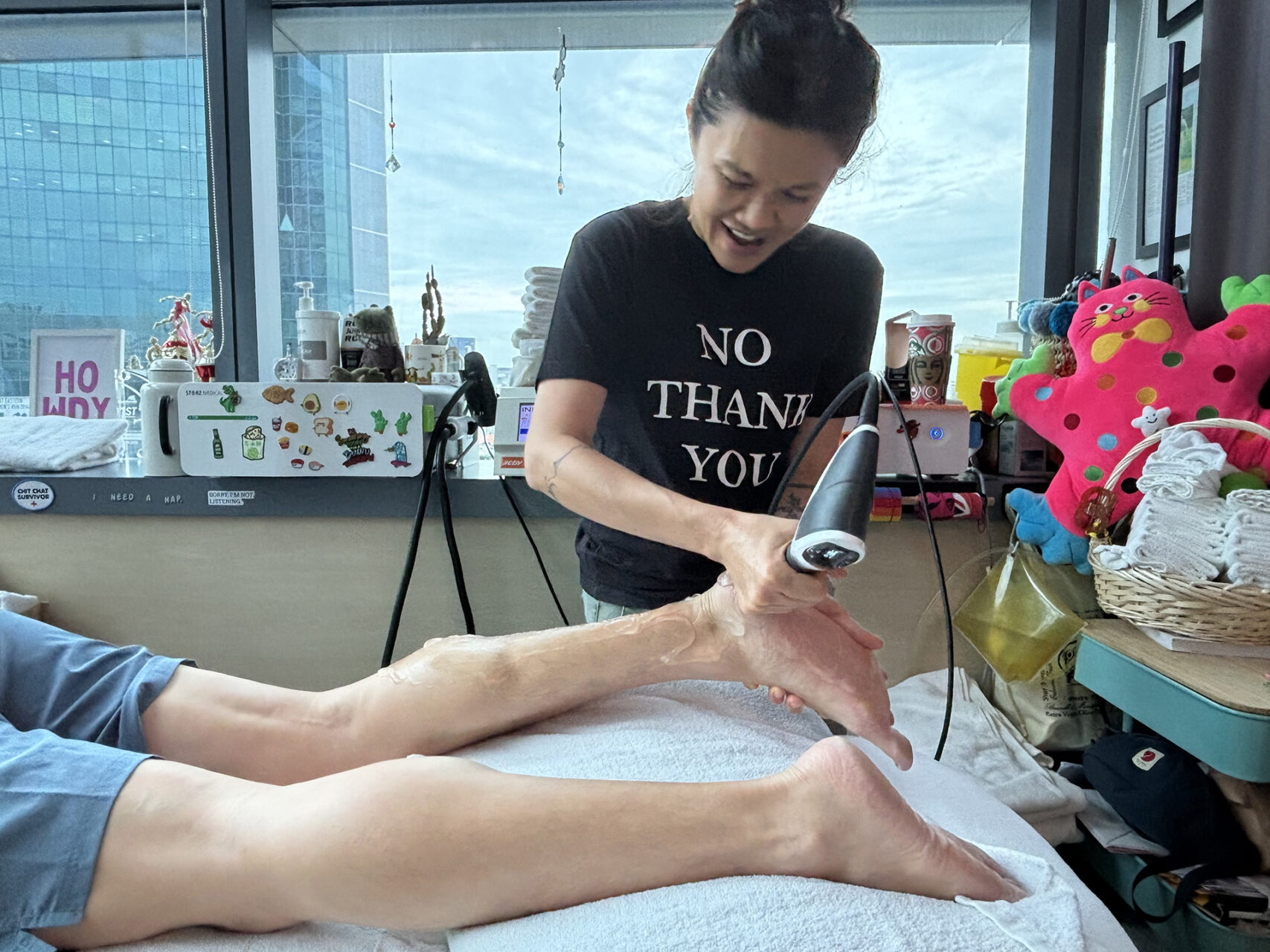
Book an Initial Consultation Today
If your heel pain lasts more than a few days, worsens with activity, or starts to affect your sleep or daily routine, it’s time to seek help. Delaying heel pain treatment in Singapore can lead to chronic inflammation, movement compensations and long-term dysfunction.
Whether your pain is sharp and sudden or dull and persistent, early intervention is key. Heel pain is frustrating, but it’s also highly treatable, often without surgery. HelloPhysio combines clinical knowledge with cutting-edge treatments to help you move better. Contact HelloPhysio today to book an appointment.

